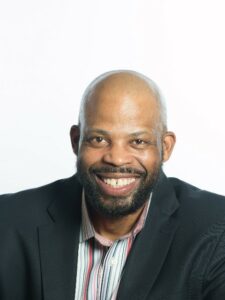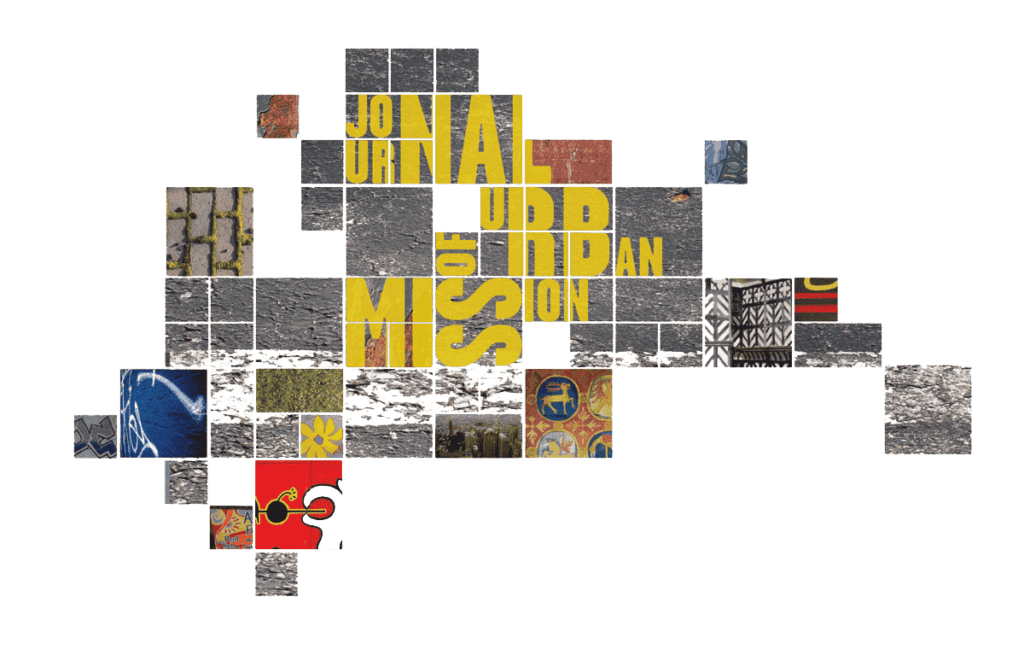Presentation Given at March 2, 2022 Colloquium
Part of Educating Urban Ministers in Philadelphia After 2020 project
Presentation Question: What does localized incarnational ministry, contextualized worship and congregation, communal spiritual formation, etc. look like?
In December 2019, an outbreak in Wuhan in central China was the source of a novel virus that could not be contained and aggressively spread across the globe in a manner that resulted in the World Health Organization (WHO) declaring a Public Health Emergency of International Concern on January 30, 2020.1 This pandemic, officially identified as the Coronavirus 2019 (COVID-19), began making a significant impact in the Philadelphia region of the U. S. in March 2020 in the midst of social justice movements across the United States that were growing in size and frequency since approximately 2014. The social justice movements were focused on the numerous inhumane, unjust killings of African American/Black people by primarily white police officers who were protected by police unions and were neither charged nor found guilty for any degree of manslaughter or murder. While the movements were triggered time and time again by the slaying of Black people by those who took an oath to “protect and defend,” they also began to shine a probing spotlight on the systematic and structural racism2 that people of color3 and communities in America had endured and continue to experience through the justice, educational, financial, and social-economic systems. The effects on the health and well-being of people and communities of color as a result of this double-pandemic have people desperately looking for solutions. While looking for solutions, a significant percentage are questioning where the church is and where has the church been for several decades.
While many people within churches across America will loudly proclaim that the church is not dead, hopefully in honesty we can agree that the church has been missing in its positions of significance in communities of color for far too long. It is through reclaiming a missional posture4 to be disciples of Jesus in deed and in truth that local churches can “follow the ways of Jesus” through incarnational ministry5 and contextualized congregation to faithfully participate in God’s mission of redemption and restoration of all creation. The “ways of Jesus” are revealed in a powerful manner in the beginning of Jesus’ ministry which began after he exited the wilderness and was victorious over the temptations of Satan according to all of the synoptic Gospels. The “ways of Jesus” are confirmed when Jesus describes the Final Judgement in the 25th chapter of the Gospel according to Matthew when the structural stewardship6 of all people is evaluated to determine who will be separated from him as “a shepherd separates the sheep from the goats.” The participation in God’s mission further commits a local church to sustain a mission-critical shift of its perspective, that equips its people to understand that they serve as conduits of the Lord and as a part of a body working to make Jesus known within their geographic area of responsibility.
In the Gospels according to Matthew, Mark and Luke, we are informed of the incarnational ministry model that Jesus utilized from the beginning of His ministry in Galilee. The incarnational ministry of Jesus is revealed with greater authority and commitment to fulfilling the mission of God in His ministry experience in Capernaum.7 After going to and preaching in the “church building” or synagogue, Jesus returns to Simon’s house and rebukes the disease that was on his mother-in-law who did not go to the church service that morning. Then later that evening, when the sun set, Jesus laid hands on and healed everyone in the town who was suffering from disease and were brought to Him at Simon’s house. Within the Ancient Near East, the laws and policies were designed to dehumanize people because they were suffering from disease which caused the “infected people” to be cast out to live outside of their community and live “at the margins.” Jesus’ sequenced actions during this testimony of His ministry enabled two transformative events to occur in the lives of the community. First, by laying His hands on the people diseased with various forms of illness and a structure of oppression, Jesus joins with them in their oppression and struggles to communicate that they were still God’s beloved, who were created in His image and deserving to participate in the fullness of their humanity.
Second, in healing them of the cause of their disease, Jesus holistically redeemed them from an incomplete citizenship in the town while belovingly restoring them and their community in shalom8 in faithful alignment with God’s purpose9 for His life. The outcome of Jesus’ incarnate ministry of dwelling with the people so that they could experience a growing presence of the Kingdom of God facilitates their election to dwell with Him and/or chase after Him. The longing for Jesus is evidenced over and over again as multitudes and individual people with influence follow Jesus after being healed and restored.
The local church can look at the example of Jesus and “follow His ways” of going beyond simple “temple worship” which restrictively sees their physical gathering place as the primary place where God is present and waiting for the people to come, encounter and receive the Lord at that gathering place. The local church must wholeheartedly recommit to being the embodied and incarnate Word of God who enters into times and places with the power of the Holy Spirit and authority of Christ to commune in fulfilling God’s mission by bringing the structure and power of God’s Kingdom to bear on community upon community10 to bring forth true justice throughout the world. Jesus teaches the church that in being a hearer and doer of God’s Word we give people a Gospel that is not just audible but is also visible and actively willing to come alongside people in need to lay down their lives to remove burdens, oppression and injustice for the glory of God.
Jesus’ words in Matthew 25:35-46 further assists us in understanding how ministry should look on the other side of the historical pandemic moment in American history. He speaks to His disciples and declares that they will be judged and rewarded. Through reliving the creation narrative from Genesis 1 on a daily basis and in communing with the Lord the disciples can bring forth beloved communities from out of the depths of great chaos. The depths of chaos align with conditions within communities that are the result of embedded structures and deeply intertwined systems that continue to deny people of color throughout America a full recognition that they are created in and bear God’s image which requires them to be treated with love, dignity, and respect. Jesus identifies that the lack of recognition of God’s concern and will for all people has resulted in people being without food, drink, unwelcomed, and naked. While people are aware of these conditions, they have become indifferent in the midst of seeing human need. These words speak to the early church at that time and to the church in our time to remind us that we need to see Jesus’ concern that the disciples live out a holistic gospel that meets physical, financial, social, mental and spiritual needs of all of God’s beloved people.
The local church will be positioned to thrive when it is incarnate and contextualized to the community to which God has sent it and planted it for the benefit of the people in that community, as he did to Israel for Babylon in Jeremiah 20, to develop communities through Christ’s example and call. Dr. John Perkins identified that “it is time for the church, yes, the whole church to take the whole gospel on a whole mission to the whole world”11 through incarnational ministry that joins with the poor and use its resources to facilitate the transformation of the world. A local church must be willing to be in, with, and for the community in which it is planted so that they come together for healing and shalom. The gathered beloved children of God can never forget to “be love” in the community in which it is located because the community is its assigned field of duty in fulfilling their assignment within God’s mission.
The local church should evaluate how its current buildings are being utilized and identify opportunities that would enable them to partner with the community to better serve the needs of the community and develop greater financial stability for the church and community. Due to decreasing sizes of some congregations and/or rising cost to maintain building facilities in a safe and healthy manner, churches can repurpose some of its space to serve as a conduit of God’s grace and love. This can be achieved through establishing space(s) for business incubation for a specific number of years as part of a community well-being/financial well-being ministry to allow local entrepreneurs or businesses a safe place to build financial capital to sustain their operations and provide job opportunities within the community. Local churches can allow a portion of their space, or enter into a partnership with a local non-profit to transform their physical gathering place, to serve as a community center or recreational space12 through a community health/well-being ministry to provide educational, social, and recreational opportunities for members of the community for multiple age groups and generations.
Local churches can establish food pantries and/or establish gardens that they maintain or rent the space to community members to build gardens13 through a social/environmental justice ministry that would address the high percentage of families and students who are food insecure. Food insecure families grew to nearly 29 percent in the Philadelphia during COVID-19. The high number of food insecure children is also evidenced by the percentage of students who are eligible for free or reduced lunch within the school system. According to the federal government’s reporting for Philadelphia, several schools have a 100 percent eligibility among their student. Through this ministry families and children would experience a difference when they were hungry or thirsty as local churches would be listed when they visited national assistance sites such as www.feedingamerica.org or www.findhelp.org and be reminded that God has not forgotten about them and will provide for their needs according to His riches and glory.
As Philadelphia set its all-time yearly record for the highest number of homicides in 2021, we are reminded that it is critical for the church to be actively serving in the public sphere so that communities have representation through leaders who have the moral fortitude to serve justly while developing policies that tear down the structures of injustice and their supporting systems of tyranny. Dr. Martin Luther King, Jr. stated this same need within the nation by saying “We need leaders not in love with money but in love with justice. Not in love with publicity but in love with humanity.” Local churches can participate in bringing substantive change as structural stewards within their communities through establishing a public office ministry in support of Jesus’ disciples serving in appointed and elected positions on the local, county, state, and national levels. This ministry can build on the momentous history of change that occurred when the oppressed and people of color served in public office at all levels during the Reconstruction Era in America to restore a full humanity and citizenship to all people living in this nation.
The ministries identified illustrate some of the contextualized opportunities that are available to local churches that are committed to being the body of Christ within their communities so that Jesus is made known across this nation. In focusing on making Jesus known, the church becomes the vessel of his unwavering, salvific love and the conduit of God’s redemptive mission to bring his kingdom to fully bear on earth as it is in heaven so that His shalom is restored as the governing law of the land.
Notes
1 World Health Organization, “Statement on the second meeting of the International Health Regulations (2005) Emergency Committee regarding the outbreak of novel coronavirus (2019-nCoV),” World Health Organization, January 30,2020, accessed February 1,2022, https://www.who.int/news/item/30-01-2020-statement-on-the-second-meeting-of-the-international-health-regulations-(2005)-emergency-committee-regarding-the-outbreak-of-novel-coronavirus-(2019-ncov).
2 Paula A. Braverman, Elaine Arkin, Dwayne Proctor, Tina Kauh, and Nicole Holm, “Systemic and Structural Racism: Definition, Examples, Health Damages, and Approaches to Dismantling,” Health Affairs 41 no. 2 (2022): 171-178; 172. “Systematic racism emphasizes the involvement of whole systems, and often all systems-for example, political, legal, economic, health care, school and criminal justice systems-including the structures that uphold the systems. Structural racism emphasizes the role of the structures (laws, policies, institutional practices, and entrenched norms) that are the systems’ scaffolding.”
3 Ibid., 171. “People of color is a term used to refer to African Americans, American Indians/Alaska Natives, Asian Americans, Latinos/Hispanics, and Native Hawaiians/other Pacific Islanders.”
4 Missional posture is defined as understanding and maintaining conscious awareness of God’s missional mandate as recorded throughout the Bible. His mandate requires his people to live in and bring to bear, daily, righteousness, justice, and equity as Kingdom emissaries and soldiers at war against evil rulers and authorities.
5 Hugh Halter and Matt Smay, AND: The Gathered and Scattered Church (Grand Rapids, MI: Zondervan, 2010), 56. The authors dentify how Christians follow Jesus’ incarnational example preserved in Philippians 2:5-8 and John 1:14 that “becoming incarnational is not so much about our direction; it’s more about how we go, what we do as we go, and how we are postured in the culture God calls us to engage.”
6 Structural stewardship is being responsible and accountable to Jesus for the conditions that impact the well-being of humankind, who are made in the image of God, and all of creation within the communities God plants us to bloom for his glory. It is based on an accountability of serving as the vice-regents of God as given through the “original commandment” located in Genesis 1:28.
7 Luke 5:31-41.
8 Shalom in its Hebraic origin is a comprehensive and permanent idea of wholeness, health, welfare, safety, prosperity, and peace.
9 Purpose is defined as a specific gifting from God that serves as our personal invitation to participate in God’s mission.
10 Acts 1:8 reminds us that the disciples were going to go to Jerusalem, Judea, Samaria and to the ends of the world which reflects a community-based approach accomplishing God’s mission.
11 John Perkins, Beyond Charity: The Call to Christian Community Development (Grand Rapids, MI: Baker Books, 1993), 19.
12 Taylor Allen, “This coach transformed an abandoned Nicetown church into a rec center,” WHYY, June 19, 2021, accessed February 11, 2022, https://whyy.org/articles/coach-who-transformed-empty-church-into-a-rec-center-welcomes-community-on-juneteenth/.
13 The Black Church Food Security Network, accessed February 11, 2022, https://blackchurchfoodsecurity.net/. The organization was founded in 2015 and identifies that “we co-create sustainable food systems across the United States that are anchored by Black churches working in partnership with Black farmers and small business owners.”


